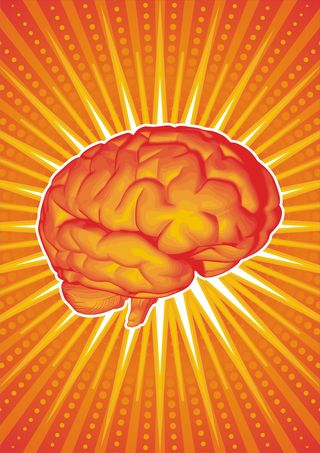Memory
What Makes Aerobic Exercise Like Miracle-Gro for Your Brain?
A new study on schizophrenia pinpoints how exercise turbocharges the brain.
Posted April 8, 2016

A decade ago, when I published The Athlete’s Way (St. Martin's Press), I wrote about groundbreaking research—which was in its earliest stages—that identified how aerobic exercise triggered neurogenesis (birth of new neurons) and improved the brain's neuroplasticity.
This week, cutting-edge research by neuroscientists at University of California, Los Angeles (UCLA) on the brain-benefits of aerobic exercise was published and presented at an international conference. The UCLA researchers have identified a revolutionary way to tackle some of the cognitive deficits associated with schizophrenia by combining aerobic exercise, computerized neurocognitive training, and antipsychotic medications.
This triple whammy appears to dramatically improve the most debilitating aspects of schizophrenia in young adults. These include: problem-solving skills, memory deficits, speed of processing, and social intelligence. Typically, these potentially crippling deficits are the driving forces that result in individuals with schizophrenia becoming disabled.
In an exciting breakthrough, Keith Nuechterlein, and a team of researchers at a free schizophrenia clinic at UCLA, have discovered that all of these benefits increase dramatically if they are “turbocharged with aerobic exercise.”
Aerobic Exercise Turbocharges Neurogenesis and Brain Plasticity
Typically, antipsychotic medications can tame the delusions and hallucinations that characterize schizophrenia within a few months. Unfortunately, schizophrenia experts have found that these medications generally do very little to reverse many of the brain-based problems that are associated with this mental illness. Schizophrenia affects approximately 1 percent of the population.
In a statement, Keith Nuechterlein, a professor at UCLA's Semel Institute for Neuroscience and Human Behavior, and one of the researchers involved in this pilot study, said,
"Our hope is to prevent the chronic disability that is so common in schizophrenia from ever occurring, and to return individuals with schizophrenia to regular employment, regular schooling and normal friendship patterns, and to have them resume as much of a full life as possible. This kind of computer training and exercise—in combination with antipsychotic medication—might go a long way toward doing that."
In the April 2016 issue of Schizophrenia Bulletin, Nuechterlein et al. report on findings from their recent pilot study conducted at UCLA's Aftercare Research Program. This ongoing study assesses and treats people who have schizophrenia and conducts research on the disease.
The preliminary findings of a second, ongoing UCLA study, were presented in a lecture, “Combining Aerobic Exercise and Cognitive Training Decreases Negative Symptoms and Improves Social Functioning in First Episode Schizophrenia: A UCLA Pilot RCT,” at the April 2016 biennial meeting of the Schizophrenia International Research Society in Florence, Italy by Nuechterlein, Joe Ventura, and Sarah McEwen, an assistant research psychologist who serves as the program's director of exercise.
"It's looking like exercising the body along with the mind has the potential to alter the course of schizophrenia, especially if the treatment is applied early in the disorder," Joe Ventura, a senior research psychologist at the Semel Institute, said in a statement.
Aerobic Exercise Optimizes Brain Structure and Functional Connectivity

Aerobic exercise stimulates the production of BDNF, which is like 'Miracle-Gro for the brain.'
The initial study, which lasted 10 weeks, treated 16 young adults who had recently experienced their first schizophrenic episode. Nine of the participants were enrolled in a computerized course for 4 hours a week of neurocognitive training, which focused on perception and memory skills for five weeks. Then, they participated in 4 hours a week of social cognitive training which focused on emotional intelligence for five weeks.
The other seven young adults took the same computer training course but added 4 sessions per week of aerobic exercise which added up to a weekly total of 150 minutes. During this aerobic exercise, study participants wore heart rate monitors to ensure they were exercising in their target aerobic zone.
Interestingly, the researchers found that cognitive performance for those who only completed computerized brain training did not budge. However, those who participated in regular physical exercise showed significant improvements to their cognitive performance.
For example, one test measured how quickly an individual could finish a complicated dot-to-dot drawing. The average completion time for those who exercised went from 37 seconds to 25 seconds. On another test, which measures people's challenges in managing their emotions in social situations, the participants who exercised for 150 minutes per week reduced the level of these challenges by 50 percent.
In the second study, 32 people—who had just experienced their first episode of schizophrenia—trained for 4 hours a week with the same computer-based brain games as in the first study. Half of the group also vigorously exercised in addition to participating in the mental training.
The researchers were expecting to see moderate improvements among the exercise participants . . . but were blown away by the magnitude of the results. Among the participants who exercised, performance on a whole battery of cognitive tests improved by 300 percent when compared to those who did not exercise.
Aerobic Exercise + BDNF = Miracle-Gro for Your Brain
The researchers suspect that these improvements are due to a brain protein called brain-derived neurotrophic growth factor (BDNF), which is released during aerobic exercise. BDNF is what the UCLA team calls ‘Miracle-Gro for the brain.’
I've written about the brain benefits of BDNF extensively in both The Athlete’s Way and previous Psychology Today blog posts. BDNF stimulates neurogenesis in many brain regions including the hippocampus, which is considered the brain's center of long-term memory. BDNF is like brain fertilizer which causes your brain to sprout new neurons, and to increase connections between neurons. These neural connections are the root of all learning and memory.
In a statement, Nuechterlein explained the nuances of neuroplasticity and neural pruning, "In adolescence, all humans lose a certain number of connections between neurons, as the brain prunes redundant or less useful synapses. In schizophrenia, the process goes awry, pruning needed as well as unnecessary connections, so important connections are deleted."
McEwen added that in the second study, the amount of BDNF increased by 35 percent in the group that had participated in both cognitive training and exercise. 50 percent of these increases occurred within the first two weeks of the study. In contrast, BDNF levels didn't change an iota in participants who only received cognitive training.
Conclusion: Aerobic Exercise Can Help Treat Schizophrenia in Young Adults

The UCLA researchers conclude that helping young adults with schizophrenia as soon as possible after their first psychotic breakdown with the triad of: aerobic exercise, neurocognitive training, and antipsychotic medication may be a winning formula. Typically, the early stages of schizophrenia are when individuals tend to be capable of making long-lasting improvements, which is why early intervention is paramount.
Although the new findings from UCLA focused on a specific subgroup of young adults with schizophrenia, a wide range of other studies have shown the ‘Miracle-Gro’ power of aerobic exercise to trigger the production of BDNF for people from all walks of life. Hopefully, these findings will lead to more effective treatments for schizophrenia and serve as motivation for all of us to be more physically active throughout our lifespans.
To read more on this topic, check out my Psychology Today blog posts,
- “Physical Activity Improves Cognitive Function”
- "Why Is Physical Activity So Good For Your Brain?"
- "Scientists Discover Why Exercise Makes You Smarter"
- "The Brain Drain of Inactivity"
- "Physical Activity Is the No. 1 Way to Keep Your Brain Young"
- "Want to Bulk Up Your Brain? Burn Some Calories Via Exercise"
- "Can Physical Activities Improve Fluid Intelligence?"
- "More Proof That Aerobic Exercise Can Make Your Brain Bigger"
- "Why Does Aerobic Exercise Improve Cognitive Function?"
© 2016 Christopher Bergland. All rights reserved.
Follow me on Twitter @ckbergland for updates on The Athlete’s Way blog posts.
The Athlete’s Way ® is a registered trademark of Christopher Bergland.




